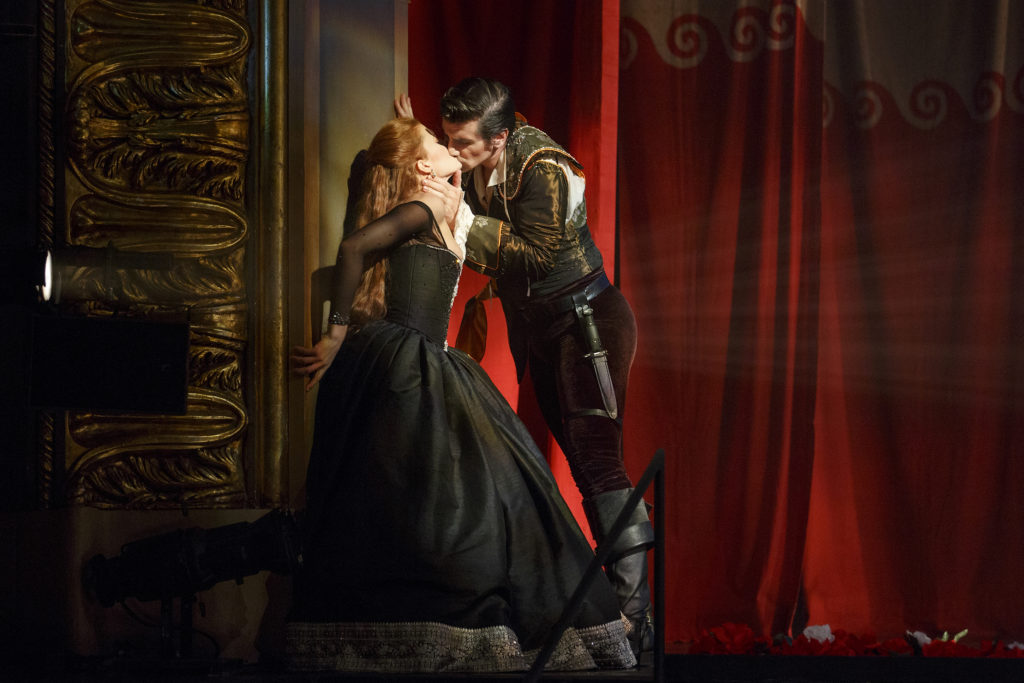Dido and Aeneas occupies a place of particular favour in the annals of Opera Atelier. An inaugural offering by the then newly emergent early opera specialist in 1985 at the Royal Ontario Museum, Henry Purcell’s gloriously stormy, mythical romance has since witnessed no less than 11 distinct OA revivals during the course of the company’s 35-year history. Extensively toured to Europe, Korea and Singapore, the work has become something of a signature piece.
Yet, however artistically memorable, however iconic, however many career milestones Dido and Aeneas may have marked in the past, for co-artistic directors Marshall Pynkoski and Jeannette Lajeunesse Zingg, Purcell’s exquisite one-act, quintessentially English masterpiece is clearly a work to be actively explored time and again.
Spotlighting an all too brief excerpt from Opera Atelier’s latest iteration of Purcell’s Restoration masterpiece seen locally at the Elgin Theatre some four years ago, the pair has returned to YouTube for the latest edition of OA’s virtual showcase, Together/Apart. The result, Together/Apart Part II, is a quite unexpected 20-minutes of utterly absorbing, multi-dimensional musical and visual imagery, part chronicle, part homage, spectacle, dance and tableau as seen through long-time Opera Atelier photographer Bruce Zinger’s remarkable time-stopping lens.
The Prologue to Dido and Aeneas that informs the majority of Opera Atelier’s most recent at home presentation largely exists as little more than a vague rumour in strict historical terms. Lost to time, the composer’s pre-existing manuscript score has essentially disappeared. In a precedent-shattering refusal to delete the missing segment from performance entirely, respected Toronto-based musicologist/conductor David Fallis constructed something of a self-created quasi period response by way of introduction to OA’s 2016 offering. Fallis’ unapologetic pastiche built from smooth translucent layers of melody neatly excised from swatches of theatre music penned by Purcell and Continental contemporary Marin Marais co-mingled with snatches of Handel yielded powerful resonance.
Brilliantly amplified and extended by Together/Apart music director/harpsichordist Christopher Bagan, Purcell’s Prologue arguably assumes an even greater sense of drama in resurrected digital form. Overlaid with crisp, plainspoken narration by actor Irene Poole voicing Virgil courtesy Princeton professor Robert Fagles’ crisp 2006 translation of The Aeneid, the sheer auditory completeness of the scene grips the imagination. Exultant and ominous in near equal turn, Fallis’ musical mosaic as played by Tafelmusik, ground bass further strengthened by Bagan’s compact Pandamorchestra ensemble, quite simply entrances, colour and harmony made manifest by a trove of Zinger’s previously unreleased gallery shots.
The sense of windswept godly capriciousness so palpable in set designer Gerard Gauci’s maritime-themed drops, if not as wide-angled and all-encompassing as originally recalled (live theatre can never be truly replicated) is nevertheless more than satisfyingly suggested in this eternally tumbling flood of on-line sensation. Paintings by Rubens, Ingres, Turner, Waterhouse — points of visual inspiration, Pynkoski is quick to point out —Baroque to Romantic, Impressionist to Pre-Raphaelite, dissolve into a stream of impossibly striking pictorial dreams. Light and form are Zinger’s realm. Dido and Aeneas is his playground. The photographic record delights and amazes.
Originally programmed to debut in the spring of 2021, Dido’s future, like so much opera everywhere today, is very much an unknown quantity. Wishfulness only carries us so far, of course, but Purcell’s infinitely brave, forever timeless queen will hopefully prevail as she has always done before. Music is eternal, her story unbounded. Remember me, she whispers across the centuries. Pynkoski and Zingg are listening.


